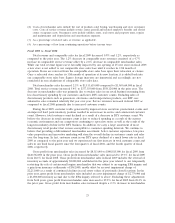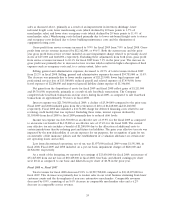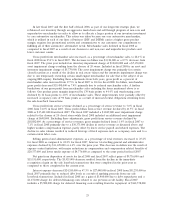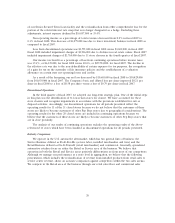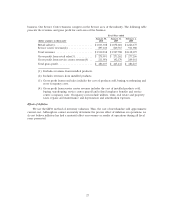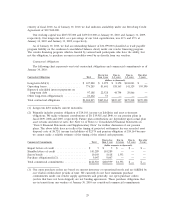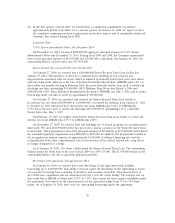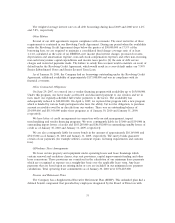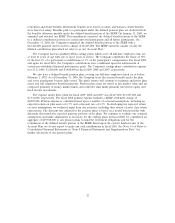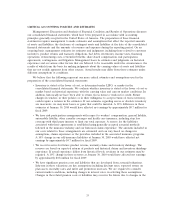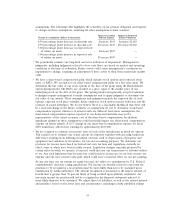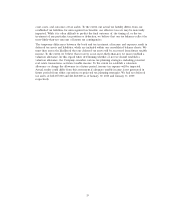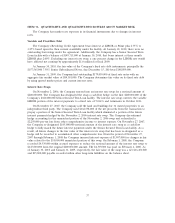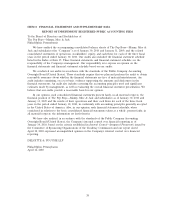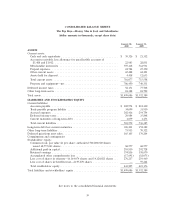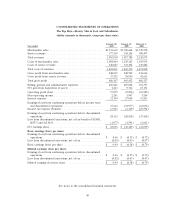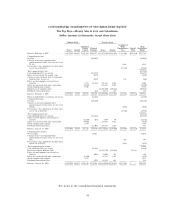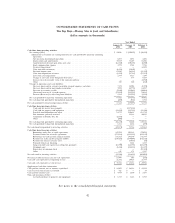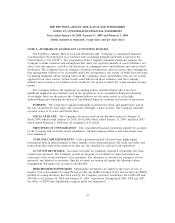Pep Boys 2009 Annual Report Download - page 91
Download and view the complete annual report
Please find page 91 of the 2009 Pep Boys annual report below. You can navigate through the pages in the report by either clicking on the pages listed below, or by using the keyword search tool below to find specific information within the annual report.CRITICAL ACCOUNTING POLICIES AND ESTIMATES
Management’s Discussion and Analysis of Financial Condition and Results of Operations discusses
our consolidated financial statements, which have been prepared in accordance with accounting
principles generally accepted in the United States of America. The preparation of these financial
statements requires management to make estimates and assumptions that affect the reported amounts
of assets and liabilities, the disclosure of contingent assets and liabilities at the date of the consolidated
financial statements and the amounts of revenues and expenses during the reporting period. On an
on-going basis, management evaluates its estimates and judgments, including those related to customer
incentives, product returns and warranty obligations, bad debts, inventories, income taxes, financing
operations, restructuring costs, retirement benefits, share-based compensation, risk participation
agreements, contingencies and litigation. Management bases its estimates and judgments on historical
experience and on various other factors that are believed to be reasonable under the circumstances, the
results of which form the basis for making judgments about the carrying values of assets and liabilities
that are not readily apparent from other sources. Actual results may differ from these estimates under
different assumptions or conditions.
We believe that the following represent our more critical estimates and assumptions used in the
preparation of the consolidated financial statements:
• Inventory is stated at the lower of cost, as determined under LIFO, or market in the
consolidated financial statements. We evaluate whether inventory is stated at the lower of cost or
market based on historical experience with the carrying value and current market conditions. In
addition, historically we have been able to return excess items to vendors for credit. Future
changes in vendors, in their policies or in their willingness to accept returns of excess inventory,
could require a revision in the estimates. If our estimates regarding excess or obsolete inventory
are inaccurate, we may incur losses or gains that could be material. A 10% difference in these
estimates at January 30, 2010 would have affected net earnings by approximately $0.7 million for
fiscal 2009.
• We have risk participation arrangements with respect to workers’ compensation, general liability,
automobile liability, other casualty coverages and health care insurance, including stop loss
coverage with third party insurers to limit our total exposure. A reserve for the liabilities
associated with these agreements is established using generally accepted actuarial methods
followed in the insurance industry and our historical claims experience. The amounts included in
our costs related to these arrangements are estimated and can vary based on changes in
assumptions, claims experience or the providers included in the associated insurance programs.
A 10% change in our self-insurance liabilities at January 30, 2010 would have affected net
earnings by approximately $4.7 million for fiscal 2009.
• We record reserves for future product returns, warranty claims and inventory shrinkage. The
reserves are based on expected returns of products and historical claims and inventory shrinkage
experience. If actual experience differs from historical levels, revisions in our estimates may be
required. A 10% change in these reserves at January 30, 2010 would have affected net earnings
by approximately $0.8 million for fiscal 2009.
• We have significant pension costs and liabilities that are developed from actuarial valuations.
Inherent in these valuations are key assumptions including discount rates, expected return on
plan assets, mortality rates and merit and promotion increases. We are required to consider
current market conditions, including changes in interest rates, in selecting these assumptions.
Changes in the related pension costs or liabilities may occur in the future due to changes in the
33


